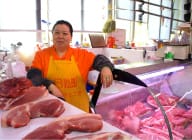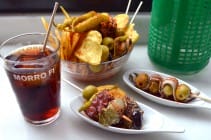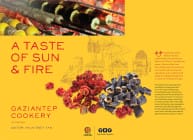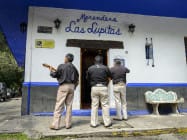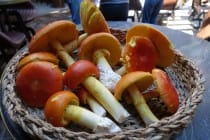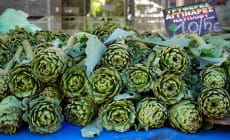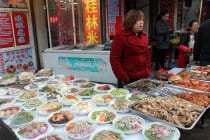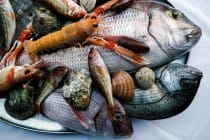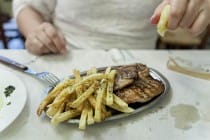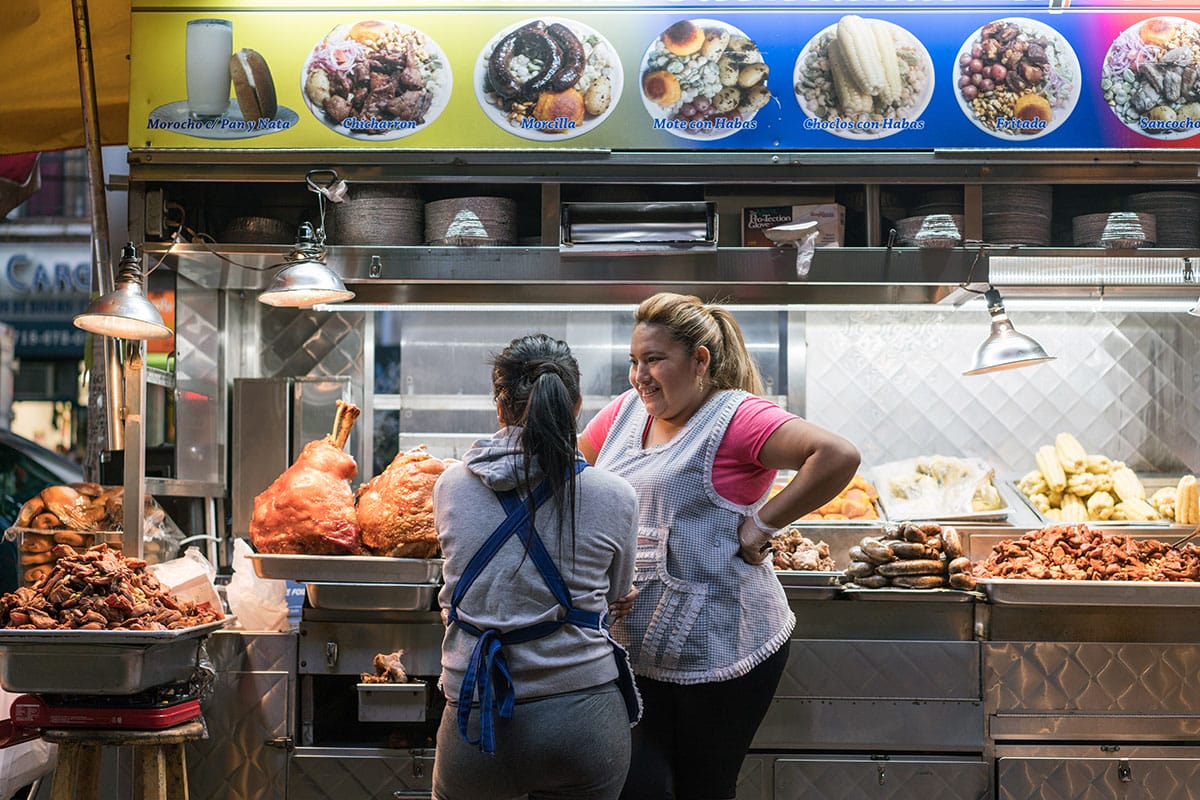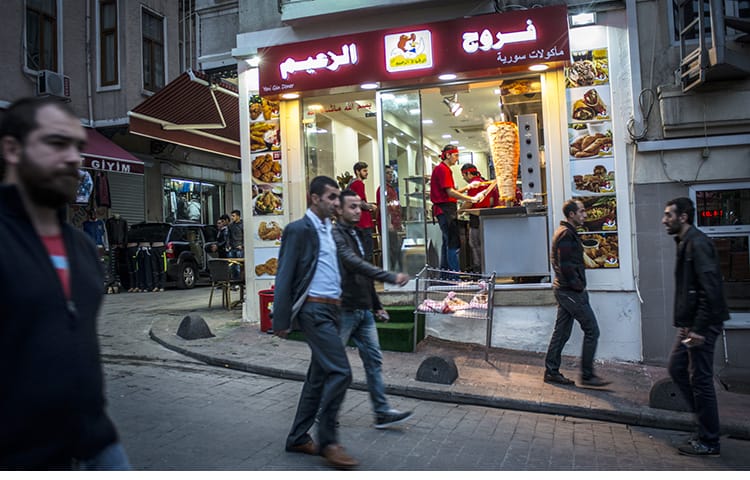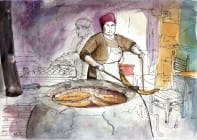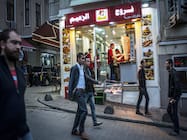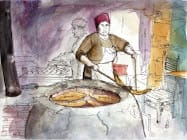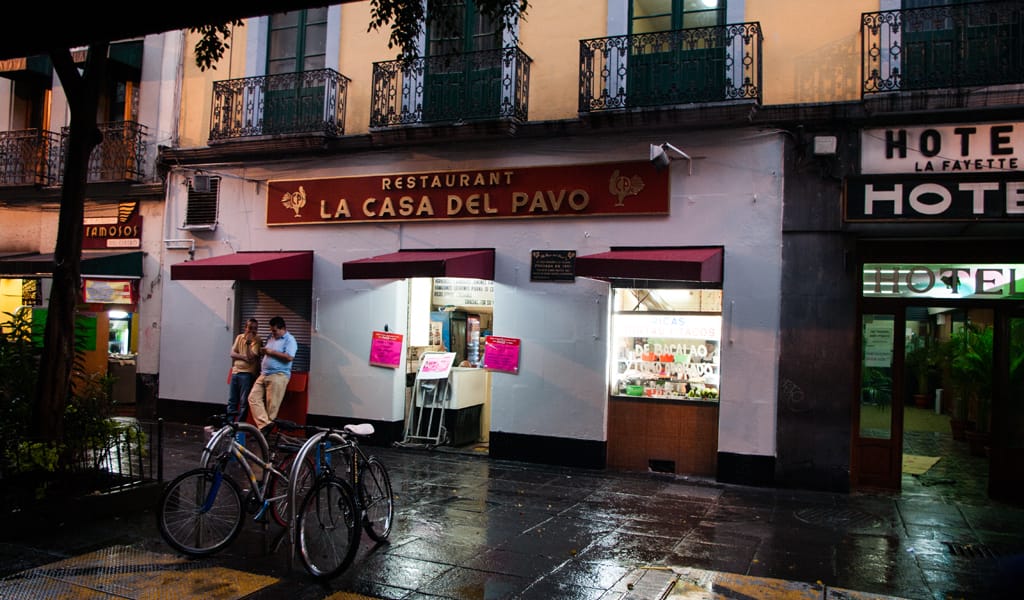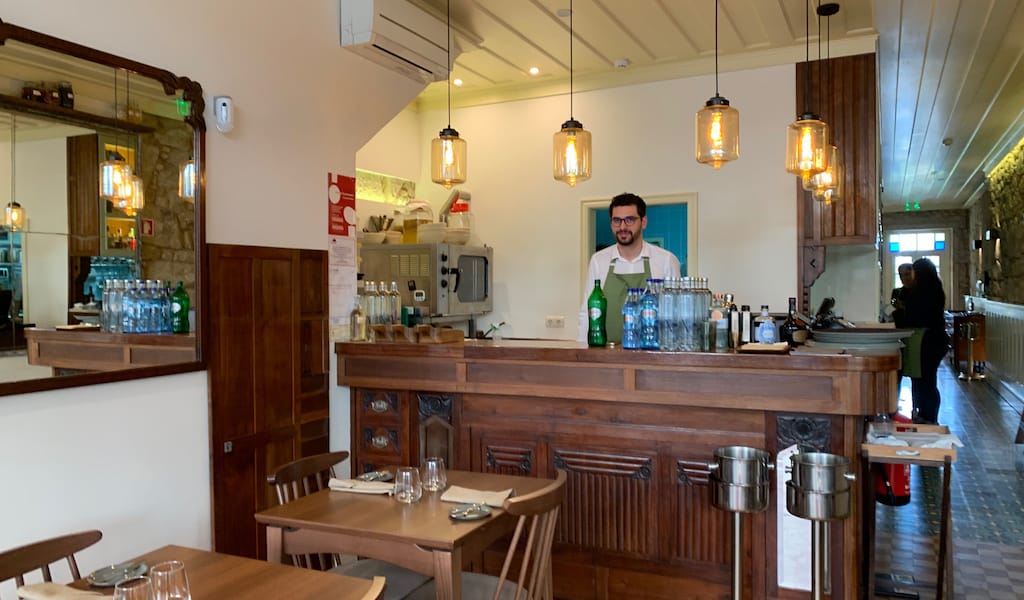Editor’s note: Öz Develi Etli Pide Salonu has moved to a new location in Beyoğlu. This article was written about its previous location in Istanbul’s Tarlabaşı neighborhood.
The tiny Öz Develi Etli Pide Salonu is nestled in a narrow backstreet in Istanbul’s Tarlabaşı neighborhood, a place that is much more synonymous with crime, gentrification and crass urban development (in that order) than it is with regional culinary specialties.
But Öz Develi’s speciality, the cıvıklı pide, is so enticing that it attracts diners from all over the city to this unfairly maligned neighborhood, which is neither without its problems nor lacking in treasures. The master behind the cıvıklı is Hacı Ahmet Beşparmark, who hails from the district of Develi, south of Mount Erciyes in the Central Anatolian province of Kayseri. As true an usta (or master) as they come, Beşparmark set up shop in Tarlabaşı in the early 1990s and has been elbow-deep in flour ever since.
“It’s been 24 years since we opened but, of course, I started this job when I was 12,” said the 45-year-old Beşparmak, who began shaping dough as an apprentice shortly after finishing elementary school. It may not be coincidence but rather destiny, as his last name means “five fingers.”
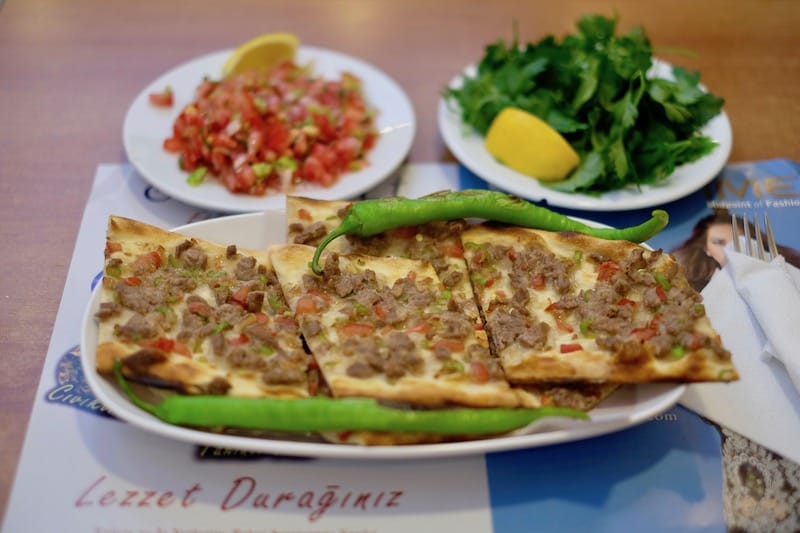
While a traditional Karadeniz-style pide laden with layers of melty kaşar cheese and sucuk (sausage) is undoubtedly delicious, eating an entire one of these grease bombs has often left us in a food coma, unable to eat again or even really move for the rest of the day. The cıvıklı, on the other hand, is the opposite – a nimble, almost light alternative to the heavy affair that pide so often is. Featuring a thin crust spun from dough eloquently shaped by Beşparmak, it is topped with a simple yet potent mix of kuşbaşı (lean cuts of beef sliced into cubes), tomatoes and green peppers.
“Because the climate is dryer [in Develi], it can be made with more fatty meat. Here, not so much,” Beşparmak explained. So while the cıvıklı in his hometown is made using lamb meat with a higher fat content, the relentless humidity of Istanbul means that a leaner cut of beef tops the cıvıklı at Öz Develi.
“If you don’t love your trade, even if it’s easy, you can’t do it.”
This modified cıvıklı is well over a foot long, and comes sliced and served alongside spicy grilled peppers – an optional topping for those who don’t mind the heat. We’ve found ourselves demolishing an entire pide on numerous occasions, after which we bounce out of our seat, shake Beşparmak’s hand and proceed to go on a long leisurely walk. The absence of cheese and butter and the delicately slender nature of the crust make for a filling meal that doesn’t zap your energy.
Kayseri is one of Turkey’s culinary heavy hitters, and local authorities have gone to great efforts to protect their delicacies. Earlier this year it was announced that they had successfully applied for Kayseri’s famous mantı, pastırma and sucuk to be registered as protected geographical indications by the European Commission, meaning they will soon join the ranks of Bordeaux wine and Tuscany olives as enjoying protected status as products specific to a region. The cıvıklı pide is among a small handful of other Kayseri specialties awaiting certification.
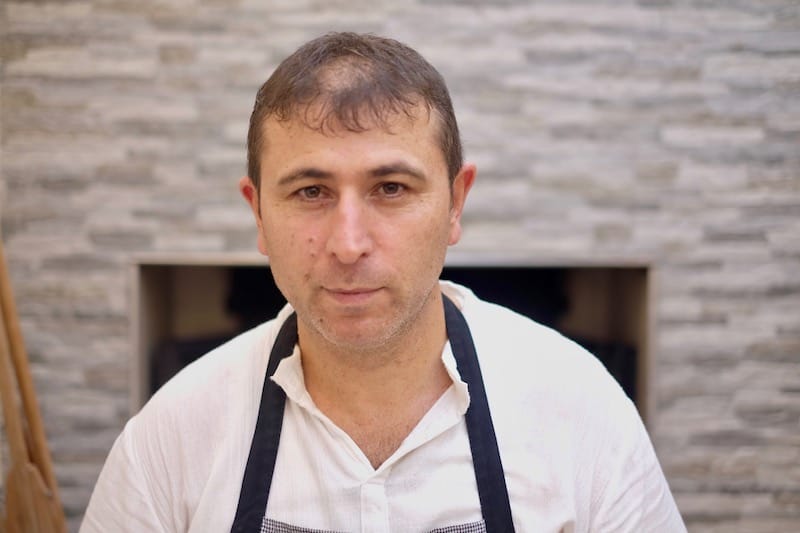
Other menu items include the sac tava, essentially a deconstructed form of the cıvıklı where the meat and vegetables are cooked and served in a shallow skillet and served with plain pide fresh from the oven. For dessert, be sure to save room for the tahinli pide, also baked to order. This tahini-based treat is rich and wholesome all at once; some swear that it tastes even better when served cold the next day.
“It’s something you have to love,” said Beşparmak of his trade. “If you don’t love it, even if it’s easy, you can’t do it,” he said, recalling memories of selling fresh bread from a street cart as a boy while heavy snow fell on Develi.
Like so many of our favorite ustas, Beşparmak left behind his memleket (hometown) and brought its prized delicacy to The City. Those wary of setting foot in Tarlabaşı are sorely missing out on the neighborhood’s little slice of Kayseri, where Beşparmak’s cıvıklı is the triumphant product of a three-decade relationship between usta and ürün (product).
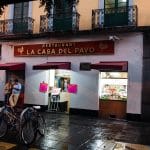 November 24, 2023 La Casa del Pavo
November 24, 2023 La Casa del Pavo
The bird that holds pride of place at the Thanksgiving table has just as important a […] Posted in Mexico City February 8, 2022 Almeja
February 8, 2022 Almeja
Thirty-year-old João Cura and his wife, 29-year-old Sofia Gomes, may be young but they […] Posted in Porto November 25, 2021 La Casa del Pavo
November 25, 2021 La Casa del Pavo
The bird that holds pride of place at the Thanksgiving table has just as important a […] Posted in Mexico City
Published on August 18, 2017
Related stories
November 24, 2023
Mexico CityThe bird that holds pride of place at the Thanksgiving table has just as important a role south of the border. Turkey has actually been a fundamental part of Mexican cooking for centuries: The Aztecs had domesticated the fowl before they had even laid eyes on a chicken. And while chicken has since overtaken turkey…
February 8, 2022
PortoThirty-year-old João Cura and his wife, 29-year-old Sofia Gomes, may be young but they have long had a wish to open their own restaurant. Yet it was never totally clear where or when they would fulfill this dream: both are originally from Coimbra, a city in central Portugal, and worked for years in Barcelona. The…
November 25, 2021
Mexico CityThe bird that holds pride of place at the Thanksgiving table has just as important a role south of the border. Turkey has actually been a fundamental part of Mexican cooking for centuries: The Aztecs had domesticated the fowl before they had even laid eyes on a chicken. And while chicken has since overtaken turkey…
















